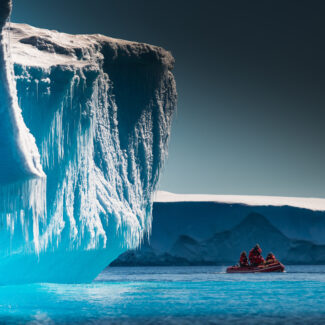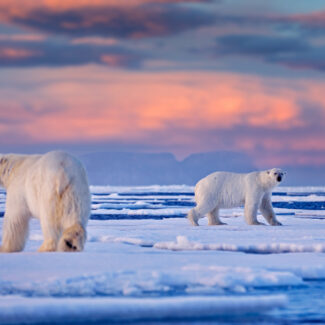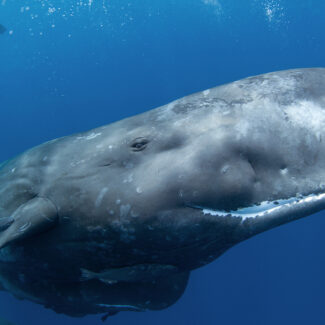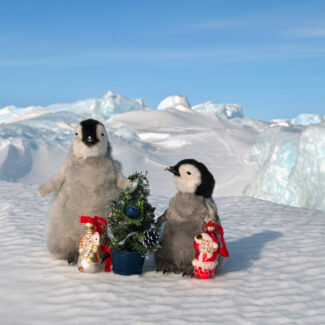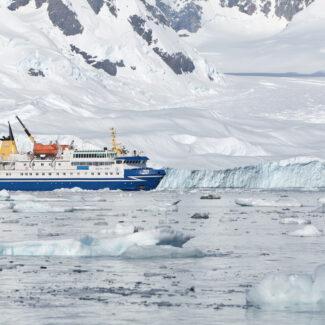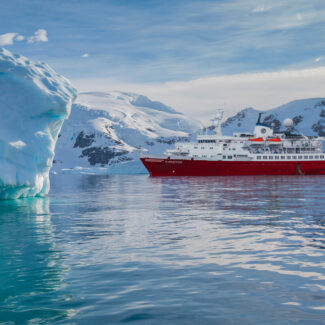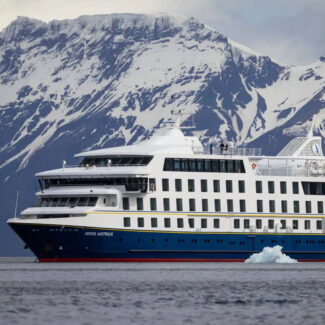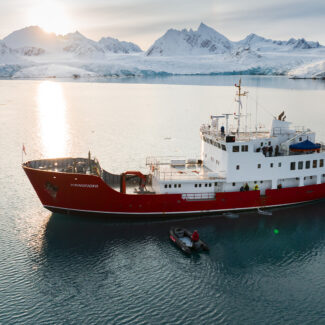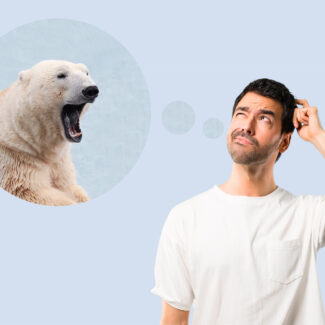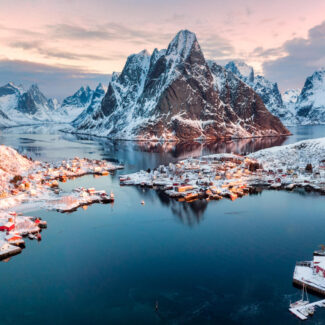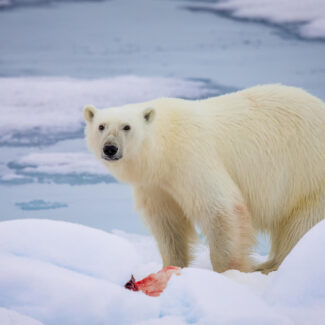Arctic Food Web & Ecosystems Explained: From Tundra To Ocean
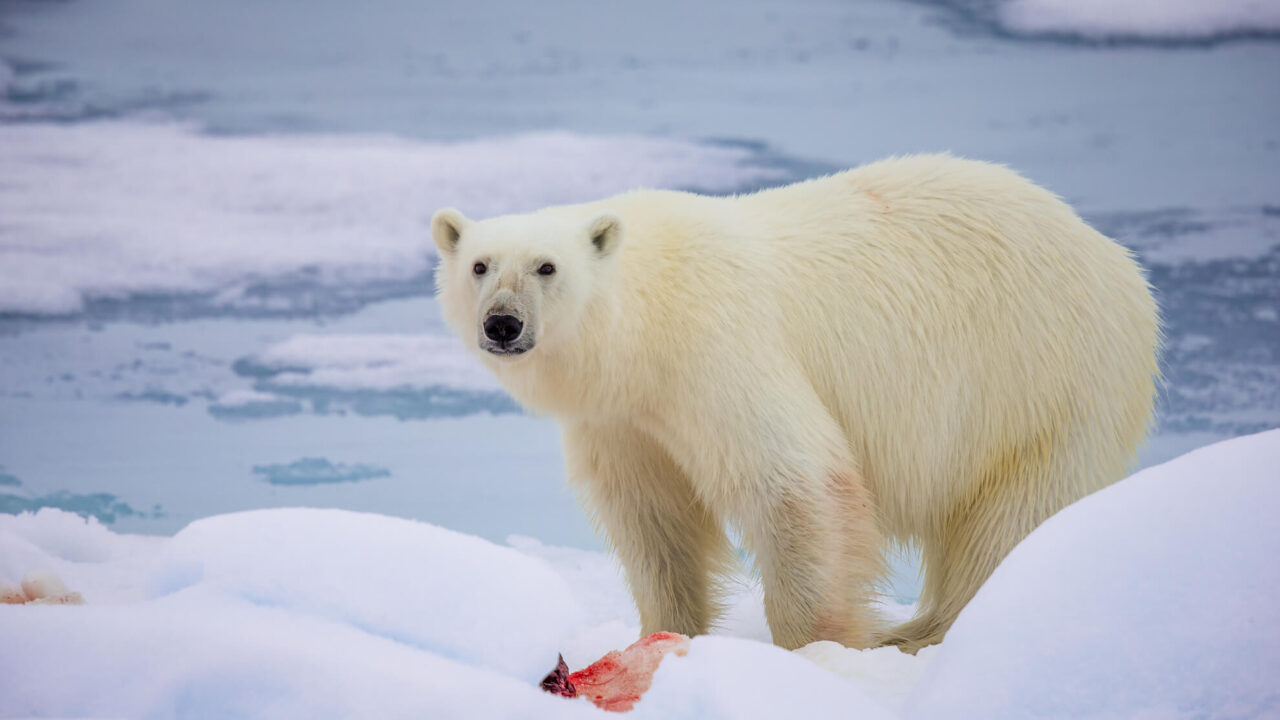
- The Arctic Environment: A Realm Defined by Light and Ice
- The Arctic Ecosystem Mosaic
- The Arctic Food Web
- Primary Producers: The Foundation of Arctic Life
- Arctic Consumers: From Zooplankton to Apex Predators
- Decomposers: The Essential Recyclers of the Arctic
- Climate Change & the Arctic Food Web: A Shifting Frontier
- Experience the Magic & Complexity of Arctic Ecosystems on an Expedition
Visitors to the Arctic get to experience some of the most intact ecological land- and seascapes left on Earth: land- and seascapes woven together by complex and seasonally fluctuating ecosystems. In this guide, we’ll break down the basics of the Arctic ecosystem mosaic and the rich food webs that drive its energy fluxes—and which feature the remarkable organisms that eke out a living in a demanding climate.
The Arctic Environment: A Realm Defined by Light and Ice
Ecosystems are shaped by fundamental environmental factors. Those in the Arctic include such profound realities as the drastic fluctuation in daylight across the year—from the Midnight Sun of summer to the Polar Night of winter—and associated effects on temperature. The related annual expansion and contraction of sea ice in the Arctic Ocean and into peripheral seas is, needless to say, another hugely influential characteristic of the environment, especially but not exclusively the marine environment.
The configuration of landmasses and waterways establishes the blueprint for the Arctic’s physical geography, which has important climatic and ecological consequences. These include the extent of connections between the Arctic Ocean and the ocean basins to the south (quite extensive between the Arctic and Atlantic oceans, for example, but restricted to the narrow Bering Strait on the Pacific side), the patterns of continental vs. oceanic/maritime climate zones, and variations in marine habitat: from extremely deep basins to shallow coastal shelves, from pelagic open water to bays, gulfs, and straits.
The Polar Night casts a long, dark shadow over the Arctic environment, defining the fundamental rhythm of its ecosystems. This period of minimal to no sunlight dictates when primary production can occur, fundamentally shaping the entire food web.
The Arctic Ecosystem Mosaic
You might think of the Arctic as a simple, pared-down (and cold!) ecosystem, but in fact it’s a highly diverse patchwork of multiple, varied ecosystems. These include terrestrial systems that range from low-lying coastal tundra and forest-tundra ecotones (ecological-transition zones) to high alpine zones and extensive tracts of year-round ice that manifest as small mountain cirque glaciers to large ice fields and ice caps and the downright enormous Greenland Ice Sheet (one of only two ice sheets currently present on the planet, the other being in Antarctica). Such ice-covered ecosystems are among the most severe habitats in the Arctic, along with the exceptionally cold and dry high-latitude expanses classified as polar desert (such as is found in the far northern Canadian Arctic Archipelago and Peary Land in Greenland).
And the marine ecosystems in the Arctic are also sundry, encompassing coastal and pelagic waters, shallows and deeps, perennial vs. seasonal sea-ice cover, and other zones. Gaps of open water within pack and landfast sea ice—from narrow, ever-shifting leads to the expansive, recurring openings called polynyas—tend to be marine ecosystem hotspots, drawing in both air-breathing and sea-foraging animals and often associated with nutrient-rich upwellings or currents as well as earlier seasonal phytoplankton blooms as compared to the surrounding ice cover.
The ecosystem concept overlaps with that of the biome: a broader-level classification of biogeography. You can envision an Arctic tundra biome in general, for example, which encompasses a variety of different, more specific ecosystems, from moss/lichen tundra and coastal-plain wetlands to barren polar desert.
The dramatic increase in daylight as spring unfolds in the Arctic results in highly productive boosts of biomass in the form of marine phytoplankton/algae and terrestrial plants, which in turn support huge numbers of animals—including many, from waterfowl, shorebirds, and seabirds to baleen whales, which migrate into the region for the sun-splashed, nutrient-rich summer. Comparatively fewer critters tough it out during the long, cold, and dark Arctic winter.
Ecosystems come full of ecological niches, which are basically the “jobs” or “positions” organisms occupy. Adapting to different niches allows more types of organisms to populate an ecosystem, given such adaptations help reduce competition between species. Both walruses and narwhals, for example, often forage on the seabed, but walruses tend to be shallow-divers, while narwhals make epic dives that may approach 6,000 feet down.
Even within a small space, the Arctic environment is a complex Ecosystem Mosaic. Here, an Arctic bird’s nest is placed among a tapestry of flowering plants, moss, and water, showing the tightly linked reliance of different life forms on these small patches of summer life.
The Arctic Food Web
Many of us remember from early school days the concept of a “food chain,” a vertical and hierarchical model showing how energy gets transferred up from photosynthetic primary producers to some top-level predator: from grass to mouse to fox, say. A more accurate or realistic depiction of energy transfer and ecological relationships within an ecosystem is the “food web,” which better accounts for the multiple pathways and cyclical patterns that we see in the natural world.
The rungs or positions of the food web represent “trophic levels,” which range from base-tier primary producers to apex predators, scavengers, and decomposers. Below, we’ll spell out a highly simplified summary of what the food web looks like in the Arctic.
Primary Producers: The Foundation of Arctic Life
Primary producers carry out the process of photosynthesis, by which energy from the sun powers the synthesis of organic nutrients from carbon dioxide and water. The real powerhouse producers in most ecosystems, including the Arctic, are plants and algae. In the terrestrial Arctic, this trophic level includes a wide range of vegetation—grasses, sedges, mosses, Dryas, Arctic poppy, saxifrage, crowberry, dwarf willow, etc.—as well as lichens (symbiotic associations of fungus, cyanobacteria, and/or algae), which are very extensive in many Arctic tundra ecosystems.
In the Arctic Ocean, primary producers include ice algae—which flourish within sea ice—and open-water and under-ice phytoplankton, which include a panoply of different marine algae and other single-celled organisms. The increasing daylength in spring and early summer spurs great blooms of phytoplankton and ice algae, creating the foundation of the Arctic Ocean food web. Recent research shows that under-ice phytoplankton can also photosynthesize during the dark months of winter and early spring, though to a lesser degree.
Terrestrial Arctic plants, like this delicate yet resilient Arctic mouse-ear chickweed, are the primary producers that form the crucial base of the land-based food web. They convert the brief summer light into energy, sustaining everything from insects to caribou.
Arctic Consumers: From Zooplankton to Apex Predators
Consumers are organisms that can’t produce their own energy in the manner of producers, and thus intake it by feeding on producers—or other consumers. These include phytoplankton-eating zooplankton such as copepods and krill, herbivores such as ground squirrels, Arctic hares, caribou, and muskoxen, and a plethora of meat-eaters: fish, seabirds, seals, walruses, narwhals, Arctic foxes, and such top-level or apex predators as polar bears, Arctic wolves, snowy owls, gyrfalcons, sleeper sharks, and orcas. Interestingly, the biggest consumers in the Arctic actually feed way down the food web: baleen whales, including the Arctic/sub-Arctic specialist the bowhead, which sieve plankton from the water column.
Certain lower-level consumers are absolute linchpins of the Arctic food web. Lemmings, for example—rodents famous for their “boom-and-bust” population cycles—serve as primary prey for many populations of high-latitude predators such as snowy owls (especially during the nesting season) and Arctic foxes. In the marine realm, Arctic cod—which as juveniles rely heavily on zooplankton for food—are an example, being fed upon by a wide range of marine mammals.
Consumers don’t just include grazers and predators; scavengers, which feed (literally) on dead meat, are also part of this guild. In the Arctic, notable scavengers include gulls and jaegers, ravens, crabs, sleeper sharks (which wear both “predator” and “scavenger” hats), and Arctic foxes (which may trail polar bears to scrounge off their kills).
Meet the lemming, one of the most vital primary consumers on the Arctic tundra. These small herbivores feast on the region’s grasses and mosses, linking the primary producers to the higher trophic levels and playing a critical role in the land-based food web.
Decomposers: The Essential Recyclers of the Arctic
Decomposers are essential, if often-overlooked, members of the food web that break down organic matter into essential nutrients that then go on to serve as part of the fundamental fuel of an ecosystem. They include both marine and terrestrial bacteria as well as fungi.
Climate Change & the Arctic Food Web: A Shifting Frontier
Current climate change is having profound effects on the food web of the Arctic, which is one of the fastest-warming corners of the planet. Less-extensive and less-persistent sea ice, for example, is changing the timing and pattern of phytoplankton blooms as well as allowing typically more temperate marine species, from fish to seabirds and cetaceans, to access habitat north of the Arctic Circle. It’s also (infamously) impacting polar bears, numerous subpopulations of which have historically primarily hunted on offshore sea ice and which now are being forced to spend longer periods of the year fasting or seeking alternative food sources on dry land.
The diminishing sea ice, as dramatically illustrated here, is forcing the polar bear—an apex predator—to adapt its hunting strategy. This reduction in its platform for life fundamentally disrupts the entire Arctic marine food web, from primary producers to the top consumers.
Experience the Magic & Complexity of Arctic Ecosystems on an Expedition
Coinciding with the most ecologically productive stretch of the calendar, Arctic cruises give you the chance to experience the marvelous and unique top-of-the-world ecology firsthand!
Disclaimer
Our travel guides are for informational purposes only. While we aim to provide accurate and up-to-date information, Antarctica Cruises makes no representations as to the accuracy or completeness of any information in our guides or found by following any link on this site.
Antarctica Cruises cannot and will not accept responsibility for any omissions or inaccuracies, or for any consequences arising therefrom, including any losses, injuries, or damages resulting from the display or use of this information.


